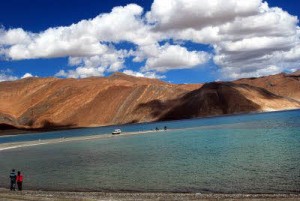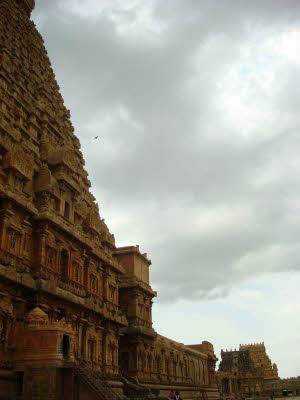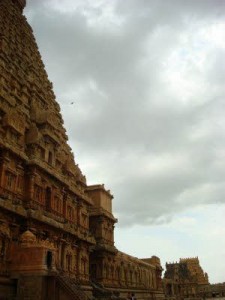On Travelling
Travelling has always been a way of life for me. I enjoy travelling for various reasons. However, one of the important reasons why I like to travel is because it awakens something inside me. For many, it may just be a sense of exposure or an escape; but for me, it is more of an internal journey, when you see and smell sights, meet people, look at nature, big cities, and so on. Journeys are a way of life. We wade through life looking for a purpose, seeking one milestone after another, looking for destinations but realizing that very often than not, there is no end to a journey. Home is really a state of mind then. For a vagabond like me, my alter ego lies in a spirit that is lost in the hills, running down the plains, getting her feet soaked in waters and reliving the past in a monument. I am often asked why I travel. Am I an escapist, shunning civilisation? Do I want to run away from the ” real” life and holiday all my life? Or is it a way to forget myself? Even worse, people today consider travel as badge value and an addiction. To begin with my journeys have been more ” real” than an escape. It is more of a self discovery, where the choices and dilemmas in life become more obvious and yet, I have let life take its own path, like the meandering road .When in doubt, my motto has been, look for the road not taken. Travelling has taught me to appreciate the finer nuances of nature. You may argue that a sunset is a sunset and the same butterfly flits in and out of the flower in your balcony. However, it is only after you see the crimson reflection in the far away waters and the wild flowers in the jungle that you learn to appreciate these finer points of life. According to me, travelling is not always about must see places.It is about what you want to see.
On What Started it All
I don’t know when exactly this interest sparked off, but I remember my mother saying that I have wheels under my feet! My folks used to take me out as a kid, to several places. Ooty and Bangalore used to be an annual feature as we lived in Madras then. During my childhood years, I used to listen to tales of my grandfather who had coffee estates near jungles and how he used to travel. My maternal grandfather was also a traveller. So, I guess all these stories of places that I happened to listen to as a kid, ended up fascinating me.
On Places of Interest and Planning a Trip
I travel everywhere. Right from off beat places of heritage importance to wild life, to eco-tourism to tourist destinations within India and abroad. I usually do a lot of research and plan an itinerary before landing anywhere and then see places which are a mix of touristy and non-touristy and spend quite a bit of time everywhere. However, even though I try to plan my trips, some of them have happened just like that. Sometimes, there are the offbeat places that I read about, which feature in my travel wishlist. Once, my cousin and I went on a trip to see 30 hoysala temples all on our own, on a weekend, just after seeing a map.
On One Memorable Trip
In 2008, I was visiting some places in interior Tamilnadu, lured by the art and architecture of the Chola kings – Raja Raja Chola I, Rajendra Chola and Raja Raja Chola II , all built between the 11th and 12th century. Words defy me when I think of the moments I stood near the Big Brihadeshwara temple at Thanjavur whose Vimana is a staggering 216 feet tall, the Brihadeshwara temple at Gangaikondacholapuram, the forgotten capital of Rajendra Chola and Darasuram built by Raja Raja Chola II. When someone asked me how I felt, I said – humbled! This ancient Tamil dynasty held sway for more than 1500 years and its origins are mired in myths and poetry as the chronology matches the reign of Emperor Ashoka (273 BC-232 BC). Literature heralds the rulers to be descendants of the Sun God. Historically though, the reign is divided into three distinct eras – the early Cholas (2nd century BC-9th century AD), the medieval Cholas (9th -11th century AD) and the later Cholas (11th-13th century AD). Our story starts somewhere in the middle of 10th century and moves on to the 12th, during the reign of Raja Raja Chola I and his son Rajendra Chola II and later on, Raja Raja Chola II.
All that remains today as a witness to their might are The Great Living Chola temples. The Brihadeshwar temples in Thanjavur and Gangaikondacholapuram, and the Airaveteshwar temple at Darasuram built by these kings are part of the UNESCO World Heritage Site. We started with Thanjavur, the original BIG Brihadeshwara temple, or the Periya Koil built by Raja Raja Chola I in the 11th century in Thanjavur. This was the moment I was waiting for, a moment that defined this trail for me. My eyes followed the Vimana (tower) of the temple as my neck craned to capture its height. It is an understatement to call it big. It is larger than life. Consider this. At a height of 216 feet, the towering Vimana is the tallest of its kind in the world, dwarfing the Gopura, or the outer tower. The shikara or the golden dome replete with numerous stucco figures weighs 80 tonnes. Elephants were apparently used to draw this single granite block on a 6 km ramp to place it on top. The Nandi weighs 27 tonnes and is the second largest in the country while the main deity, the Shivalinga is at a height of 8.7 metres, the largest in the world. Life size representations of Gods and Goddesses fill the sculptured panels and the temple is a repository of records for posterity. 108 Bharatnatyam dance postures are depicted in the temple and the corridors and ceilings are a colourful blend of fresco and mural paintings – unique to this dynasty. Architecturally, the temple is the most ambitious structural granite temple to be ever built in the world and hence it is the first to become a Great Living Chola temple and part of the UNESCO World Heritage Site.
Rajendra Chola I, the next ruler, had moved beyond South India and invaded East upto the Gangetic Plain and created ripples overseas in Asia and overpowered all of today’s Srilanka, Maldives, Malaysia and Indonesia. Yet, his capital, Gangaikondacholapuram that controlled this mighty empire for over 250 years has simply vanished from the face of this earth. When Rajendra Chola I conquered the Gangetic plain, he wanted to celebrate. He also wanted to portray to posterity that he was probably greater than his father Raja Raja Chola I who had immortalised himself with the Big Brihadeshwara temple in Thanjavur. So Rajendra took a step further. After all, he was the commander in chief in his father’s army as well. He moved away from Thanjavur, his father’s capital and built another Brihadeshwara temple in a new found capital called Gangaikondacholapuram which literally means the town of the Chola who captured even the Ganges. However, he did not complete the temple. And, he finally ensured that his father’s temple was bigger than his.
The third destination was Darasuram. I visited the Airavateshwar temple built by Raja Raja Chola II in the 12th century. This is indeed a sculpture’s dream in stone. A temple shaped like a chariot drawn by horses and supported by 100 monolith pillars carved exquisitely, greeted us. And finally, the trip also included a visit to the golden Chidambaram temple. The Chola trail gave me something more than just an dose of history. A sense of identity as well.
On Travel Writing
Writing for me, is like breathing. It makes me feel that I am alive. I write as it is the most natural, spontaneous thing to do. It eases a clogged mind. It is instant gratification, like ice cream. Above all, it is an addiction. It helps me keep in touch with my core self and gives form to the various facets within me. It creates and presents a picture that exists only in my mind. It is like a waterfall, where words just burst forth creating a sequence, sometimes drawn by an invisbile force. It is like what Keats said – That which is creative must create itself! As a travel writer, there are two things that I look at. One is from an editor’s or a magazine’s perspective on what they are looking for in a story. Is it a destination special or a guide or a personal experience piece? Or, is it an article where I write about an inside story behind a place or something intrinsic about the place? When I write for my own blog, I try to share the pulse of the place and my experience. I also mention stories of people through whom I see a place. Travel writing is an intense personal experience, sometimes even more exhilarating and draining than the journey itself and according to me, it is more than just putting the journey down in an avalanche of words.
clogged mind. It is instant gratification, like ice cream. Above all, it is an addiction. It helps me keep in touch with my core self and gives form to the various facets within me. It creates and presents a picture that exists only in my mind. It is like a waterfall, where words just burst forth creating a sequence, sometimes drawn by an invisbile force. It is like what Keats said – That which is creative must create itself! As a travel writer, there are two things that I look at. One is from an editor’s or a magazine’s perspective on what they are looking for in a story. Is it a destination special or a guide or a personal experience piece? Or, is it an article where I write about an inside story behind a place or something intrinsic about the place? When I write for my own blog, I try to share the pulse of the place and my experience. I also mention stories of people through whom I see a place. Travel writing is an intense personal experience, sometimes even more exhilarating and draining than the journey itself and according to me, it is more than just putting the journey down in an avalanche of words.






